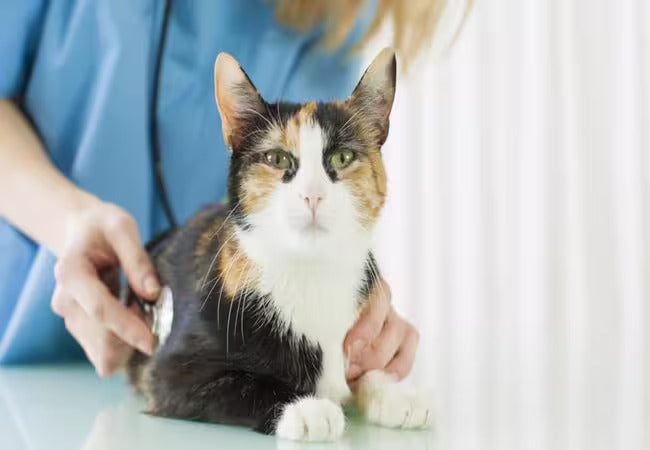Vet‑Approved 2025 Guide: Cat Tumor & Mass Removal Surgery – Everything You and Your Cat Need to Know 💉🐱🩺

In this article
Vet‑Approved 2025 Guide: Cat Tumor & Mass Removal Surgery – Everything You Need to Know 💉🐱🩺
By Dr. Duncan Houston BVSc
Lumps and bumps on cats are common—some harmless, others serious. Whether it's a surface mass or an internal growth, accurate diagnosis and thoughtful surgical care are critical. This continuous, 2025 vet‑approved guide covers diagnosis, surgery types, pre-and post‑op care, warning signs, and enriching recovery tips. Plus, discover how Ask A Vet can make your cat’s healing journey calmer and smoother. 🐾✨
🔍 Why Lumps Need Evaluation
Masses can be benign (like lipomas or cysts) or malignant (fibrosarcomas, mast cell tumors, squamous cell carcinoma). Only microscopic diagnosis via biopsy or FNA reveals the true nature. Surface lumps may need removal if they grow or ulcerate; internal masses often require proactive surgery.
🧪 Diagnosing a Mass
- FNA/Cytology: Quick needle sample to screen for neoplastic cells—useful for skin masses.
- Biopsy: Incisional or excisional tissue samples are sent to a pathologist for definitive diagnosis.
- Imaging: Ultrasound or X‑rays evaluate internal tumors and detect metastasis.
📋 Surgical Options Based on Tumor Location
Surface Masses:
- Surgical excision with clean margins is often curative for skin tumors.
- The use of an e‑collar, recovery suit, and dry bandaging helps protect the area.
Internal Tumors:
- More extensive surgery is needed, which may involve abdominal or chest explorations.
- Require 10–14 days of strict rest, careful monitoring, pain meds, and incision checks.
🏥 Pre-Op Preparation
- Comprehensive examination plus bloodwork and urinalysis—checks liver, kidney, anemia, clotting.
- Imaging to help plan surgery and evaluate spread of cancer.
- Plan for anesthesia support and possible internal crop irrigation.
⏱️ What to Expect on Surgery Day
- Light sedation or general anesthesia with catheter and fluid support.
- Intubation and monitoring (EKG, pulse–ox, temperature).
- Precise excision—surface lumps need minimal skin removal; internal tumors may require organ tissue surgery.
- Tissue samples were sent for histopathology to determine malignancy and margins.
🛏️ Recovery: Monitoring & Care
Surface Mass Recovery:
- Short-term rest (3–7 days depending on location).
- Inspect incision twice daily. Look for redness, swelling, seroma, and discharge.
- Keep bandages dry; replace them if wet or soiled.
- Continue medications (pain, antibiotics) regime.
Internal Tumor Recovery:
- Strict confinement and pain management for ~2 weeks.
- Monitor appetite, urination, and bowel movements—report issues.
- Rechecks at 10–14 days and follow-up ultrasounds/thoracic X-rays every 3–6 months.
⚠️ Warning Signs to Watch For
- Incision was red, hot, draining, and leaking fluid.
- Refusal to eat/drink, lethargy, vomiting, diarrhea, difficulty urinating/defecating.
- Any sudden breathing changes, collapse or gait issues after mass removal near limbs/shoulder/chest.
📈 Prognosis & Next Steps
- Benign surface lumps are often cured by removal.
- Malignant tumors may require chemo or radiation if margins are incomplete.
- Internal tumor outcomes vary—ongoing monitoring and treatment adjustments may be needed.
- Periodic follow-up exams every 3–6 months for cancer-prone cases.
🛠️ Comfort & Support Tools
- Ask A Vet: Convenient post-op checks, medication reminders, and answering recovery questions virtually.
📞 When to Contact Your Vet Immediately
- Fever, vomiting, or diarrhea lasting more than 24 hours.
- Refusal to eat/drink, lethargic behavior, or collapse.
- Urination or bowel changes beyond expected recovery (e.g. no output after 48–72 hrs).
- Any incision leakage, swelling, opening, or odor.
🏁 Final Thoughts
Whether your cat needs a simple skin mass removal or a deeper internal tumor surgery, careful diagnostics, precise surgical care, vigilant aftercare, and comforting support tools like Ask A Vet make all the difference in smooth recovery. Keep communication open with your vet and stay observant at home—your cat’s well-being is in your hands. Here’s to a successful, pain-free healing journey! 🐱❤️






